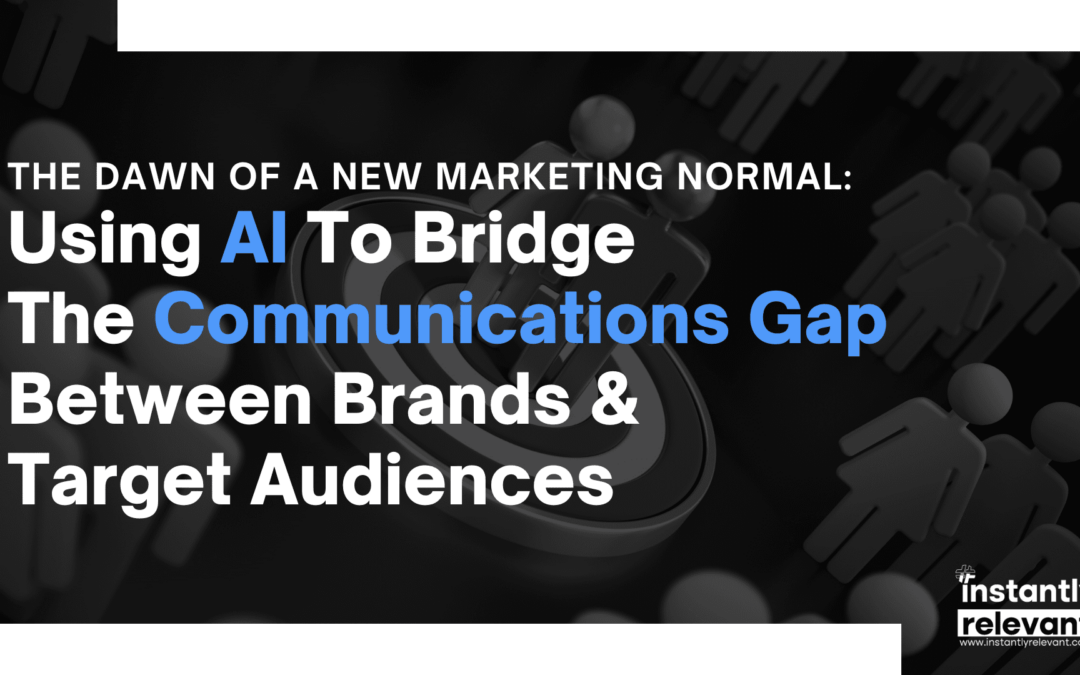Marketers rely on positive personal interactions to connect with customers. Traditionally, they would use print media, meet face-to-face, and speak on the phone. This approach has shifted with the rise of smartphones, social media, and AI. This is why marketers try to reach out to their audiences through digital channels and use AI to bridge the communications gap.
Technology creates new ways for brands to interact with consumers, but one major challenge persists in communication barriers. It happens when brands fail to resonate with customers. Artificial intelligence (AI) can bridge this gap by providing real-time data and insights into their target audiences.
Around 82% view big data as a valuable source—48% of businesses leverage AI to analyze big data effectively to understand customers better and close the communication gap. Continue reading to learn how AI is changing the marketing landscape and how your brand can use it to stay ahead.
Using AI To Bridge The Communications Gap Between Brands & Target Audiences
In the past, marketing teams would use print media, such as newspapers and magazines, to reach their audiences. But with the rise of IoT (Internet of Things) and social media, they now have new channels to connect with leads and customers, permanently changing how businesses communicate with their targets.
For brands to strike a chord, it takes a lot of data and a deep understanding of customer expectations, pain points, and habits. Yet what was once a complex, time-consuming process has become easier thanks to artificial intelligence.
With AI, brands can gain a more accurate view of their audiences’ needs to bridge communication gaps and deliver helpful, relevant, and personalized content at scale. In addition, automation frees up time for marketers to focus on strategy, decision-making, and other higher-value tasks.
Here’s how AI helps businesses create more meaningful connections:
1) Automated customer segmentation
Manually segmenting customers is often an error-prone process that can lead to incorrect assumptions about customer behavior. With AI, they can now automatically do it based on shared characteristics. It helps them create more targeted content and improve the overall customer experience.
2) Sentiment analysis
Hubspot reported that 66% of customers want businesses to understand their needs. One way is to use surveys to explore how audiences feel about specific topics, such as their customer journey and experiences.
Yet it takes a lot of time to send these surveys, get the results, and interpret and analyze the data. AI accelerates the process, enabling brands to gain the latest insights to improve their strategies and approach and effectively address customer pain points and concerns.
3) Dynamic content generation for AI to bridge communications gap
Businesses would create static content, such as banner ads and website landing pages, that doesn’t change much over time. You can turn that around—AI can generate dynamic content tailored to the individual user, helping you improve conversation rates and engagement.
4) AI predictive analytics
Businesses turn to historical data to make decisions about their target audiences. With predictive analytics, they can use AI to understand future customer behavior, prepare better marketing strategy decisions, and allocate resources more efficiently.
Conclusion
AI shows potential as a powerful communications tool that can help brands better understand and engage with their target audiences. Marketers who are quick to embrace this technology will be in an advantageous position to reap the benefits of improved customer engagement and increased sales.
Are you ready to join the dawn of the new marketing normal? Let’s chat at https://calendly.com/instantlyrelevant and find out how we can help you get started using AI.

